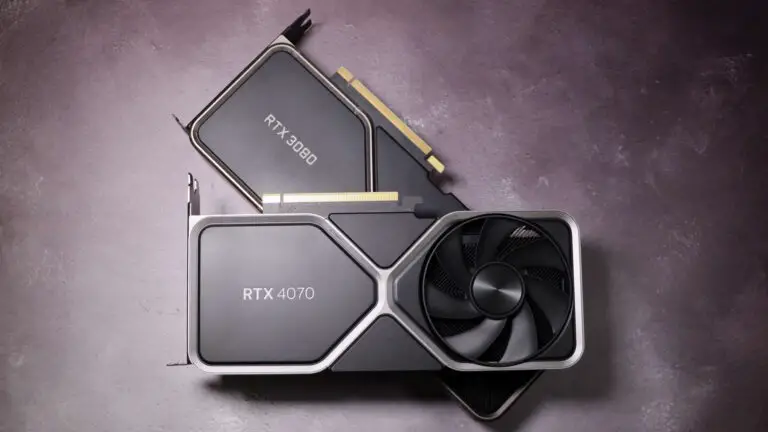Rumors on Intel’s Next-Gen Battlemage GPUs
As we venture into 2024, the buzz around Intel Battlemage GPU 2024 and the mainstream GPU market is intensifying. The latest whispers suggest that Intel’s forthcoming Battlemage GPU architecture may pivot away from the high-end competition, such as AMD’s RX 7900-series or Nvidia’s RTX 4080, to instead target the mainstream market. This strategic move could align with the majority of GPU sales, although it might mean a longer wait for those hoping for a third major player in the high-performance GPU competition.
Battlemage GPU Specifications
Below is a table outlining the rumored specifications of Intel’s Battlemage GPU:
| Specification | Details |
|---|---|
| Xe Cores | Up to 56 Xe cores |
| Boost Clock | Up to 3GHz |
| L2 Cache | Initially rumored at 116MB, now suggested to be 8MB |
| Memory Bus | Initially rumored at 256-bit, now suggested to be 192-bit |
| ‘Adamantine’ Cache (L4) | 512MB |
- Increased number of Xe cores from the Arc A770’s 32 to a rumored 56.
- Boost clock potentially reaching up to 3GHz, a significant increase if true.
- Reduction in L2 cache from the initially rumored 116MB to 8MB.
- Memory bus width potentially reduced from 256-bit to 192-bit.
- Introduction of a new ‘Adamantine’ L4 cache with 512MB capacity.

Potential Market Strategy and Performance
Intel’s market strategy for the Battlemage GPUs appears to be a focus on the mainstream segment rather than the high-end market. This could be due to the less favorable profit margins associated with the top-tier chips. RedGamingTech, a YouTube channel known for tech insights, suggests that Intel may opt for a smaller GPU with 40 Xe cores, 18MB of L2 cache, and no L4 ‘Adamantine’ cache, paired with a 192-bit memory bus. This would be a modest step up from the current Arc A770, which already boasts 32 Xe cores and a 256-bit memory bus.
Performance expectations for the Battlemage GPUs are cautiously optimistic, with the architecture potentially featuring expanded Vector Engines in the Xe cores, moving from a SIMD8 design to SIMD16. This could mean that each Battlemage XVE would be equivalent to two Alchemist XVEs, suggesting a significant performance boost.

Comparison with Other GPUs
When comparing the rumored Battlemage GPU architecture to Intel’s previous models and those of competitors, several key differences emerge. The Battlemage architecture is expected to feature SIMD16 Vector Engines, which would be a significant step up from the SIMD8 design found in the Alchemist series. This change could potentially double the processing capabilities of each XVE within the GPU.
However, it’s important to note that the increase in processing power doesn’t necessarily mean a proportional increase in the physical size of the Xe cores. Intel could reduce the number of XVEs per Xe core, which is a configuration already seen in Intel’s High-Performance Computing (HPC) GPUs.
AMD and Nvidia, the other key players in the GPU market, also have their own terminologies and architectures. AMD’s Stream Processors and Nvidia’s CUDA cores are analogous to Intel’s XVEs, with all serving the purpose of processing threads. The Battlemage’s potential SIMD16 design could place it in a more competitive position against these rivals.
Despite the potential for increased performance, the shift in Intel’s strategy towards the mainstream market suggests that the company may not be directly challenging the ultra high-end sector dominated by Nvidia’s top-tier GPUs. This is similar to AMD’s rumored approach with its next-gen RDNA 4 chips.
Ultimately, the true capabilities and market positioning of Intel’s Battlemage GPUs will become clearer as more concrete information becomes available and the products are officially launched.
Implications of GPU Manufacturers’ Market Strategies
The evolving strategies of GPU manufacturers like Intel and AMD, with their apparent shift towards the mainstream market, could have significant implications for the industry. If both companies focus on mainstream rather than high-end GPUs, Nvidia could be left unchallenged in the ultra high-end sector for the foreseeable future. This could impact consumer choice and pricing in the premium segment of the market.
For the mainstream market, however, increased competition from Intel’s Battlemage GPUs could lead to better performance and value for consumers. The potential improvements in the Battlemage architecture, such as the SIMD16 Vector Engines, suggest that even mainstream GPUs may see substantial performance gains in the coming years.
As 2024 unfolds, the GPU landscape is poised for a mix of competition and innovation. With rumors and speculation abounding, enthusiasts and consumers alike will be watching closely as Intel, AMD, and Nvidia unveil their latest offerings. The GPU wars are far from over, and the year ahead promises to be filled with exciting developments for gamers and professionals alike.

